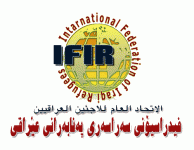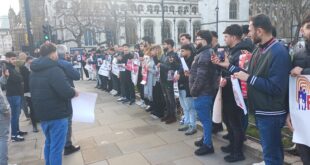Iraq Weekly Press Release from Janan Aljabiri IFIR Bagdad representative
ifir web
January 23, 2017
Home
662 Views
23th January 2017. International Organization for Migration (IOM) stated on the 6th January that the number of displaced persons since the second offensive in Mosul on 29th December 2016 has reached 22,217 families (133,302 individuals). Many have been displaced from the fighting pushing them from three directions into eastern districts where the battle has been deadlocked. The IOM also estimated that 700,000 civilians are trapped in the city largely inaccessible to humanitarian organisations. The UN High Commissioner for Refugees stated that 160,836 Internally displaced persons (IDPs) from Mosul and surrounding areas since the military offensive began on 17 October.
While sheltering from the fighting, or waiting for a favourable time to flee displaced people said they had not received any fuel since their displacement and had been reduced to using wood to cook because of lack of kerosene.
According to IOM’s DTM data between 29 December and 5 January, an increase of 2,657 new IDP families (15,942 individuals) was recorded. Approximately 88 percent of the currently displaced IDPs (115,968 individuals) are hosted in camps or emergency sites, with the largest concentration, 98 percent (129,990) in Ninewa governorate. Hala Jabar the IOM press officer said “In a worst-case scenario, the crisis could displace up to one million people with 700,000 individuals who may need urgent emergency shelter, non-food items, health support and emergency livelihoods”.
There are approximately 3000 displaced people seeking a safe haven In Kurdistan Iraq. The intensity of the war inside Mosul city and the lack of food, water, medicine, electricity has forced people to leave. This is in addition to that fact that more than 1.5 Million person are trapped in Mosul city. The situation is expected to worsen in the coming days if the Iraqi government and its Militias and troops move from the eastern side of the city to the western side which is considered as the stronghold of ISIS.
It is estimated that more than 90 thousands people live inside the old city which is a stronghold of ISIS. Militants continue to indiscriminately shell residential areas to take revenge on the people, using civilians as a human shield to cover their retreat towards Syria.
It is important to remember that in the last week attacks on the University of Mosul and other residential areas led to the killing of a number of Iraqi scientists including Professor Mohamad Al-Taib, an Iraqi scientist was killed with his daughter and wife after the bombardment of his home. In addition Professor Ghanim Mohammad Al-Hafo an academic from the University of Mosul was killed. The Research Centres and academic buildings were completely destroyed.
In addition to Mosul, there are still a number of areas such as the district of Hawija, Kirkuk Governorate’s last district still under extremists’ control and the areas of Rashad, Zab, Riyad and Abbasi, southwest of Kirkuk, were captured by the Islamic State in June 10, 2014. These areas are exposed to very serious risks following the war in Mosul. ISIS have attacked many families who attempted to escape. Many families were killed in Mosul city, and others from Hawija. This has led to approximately 17 thousands persons being forced to leave these areas and seek a safe place in the city of Kirkuk.
The IDPs movement in the cities of Mosul and Kirkuk are calling for urgent intervention to provide humanitarian relief for those in desperate need. IFIR is calling upon human rights organisations to extend its support to Iraqi IDPs in Mosul and other cities in Iraq.
For further information please contact IFIR Iraq on:.
Contact details of Baghdad Branch:
Tel: 00964 (0) 7800063048
Skype: janan.aljabiri
Main Branch- London:
Tel: 44(0) 7856032991/ +44(0)7720291516
Kurdistan details:
Tel:00964(0)770724343
 IFIR-Eng The International Federation of Iraqi Refugees
IFIR-Eng The International Federation of Iraqi Refugees




